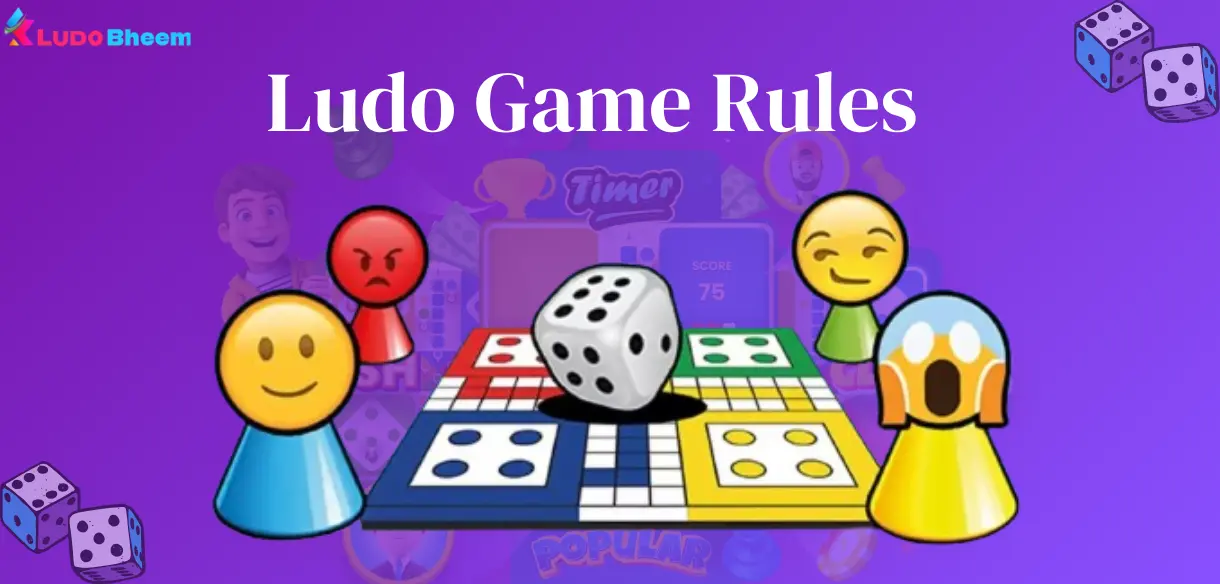Ludo Rules: A Complete Guide to Playing the Classic Board Game
 0
0
Posted: Tue May 28 3:45 AM PDT
Business: My Business Name
Updated: Tue May 28 3:46 AM PDT

Ludo is a classic board game that has been enjoyed by families and friends around the world for generations. Simple yet engaging, it offers players a mix of luck and strategy. Whether you're a newcomer or just need a refresher on the rules, this guide will walk you through the essential aspects of Ludo, ensuring you understand the game thoroughly.
Overview of Ludo
Ludo is a board game for 2 to 4 players, where each player races their four tokens from start to finish based on the roll of a single die. The objective is to be the first to move all four tokens to the home area.
Game Components
- Ludo Board: A cross-shaped board with a large square in the center, colored home triangles at the corners, and four starting areas.
- Tokens: Each player has four tokens of a specific color (red, blue, green, or yellow).
- Die: A single die is used to determine the number of spaces a token can move.
Setting Up the Game
- Board Setup: Place the board on a flat surface.
- Assign Colors: Each player chooses a color and takes the four corresponding tokens.
- Starting Positions: Place the tokens in the starting area of their respective colors.
Basic Rules of Play
Starting the Game
- Players take turns rolling the die. The player who rolls the highest number starts the game. Play proceeds clockwise.
Rolling a Six
- First Move: To move a token from the starting area to the starting square, a player must roll a six. This applies to all tokens.
- Additional Turn: Rolling a six grants the player an additional roll. This can be repeated indefinitely if the player keeps rolling sixes.
- Subsequent Moves: After the first token is moved, rolling a six still allows another roll and can be used to advance tokens already on the board.
Moving Tokens
- Players move their tokens based on the number rolled on the die.
- Tokens move clockwise along the board's path, following the track that leads back to the home column of their color.
Entering the Home Column
- Once a token has completed the circuit around the board, it enters the home column of its color.
- A token must reach the exact number to enter the home area. If the number rolled is too high, the token cannot move.
Capturing Tokens
- If a player's token lands on a square occupied by an opponent's token, the opponent's token is captured and returned to their starting area.
- The capturing player earns an extra roll.
Safe Squares
- The colored squares (start of each color path) and the central squares are safe. Tokens on these squares cannot be captured.
Winning the Game
- The first player to move all four of their tokens into their home area wins the game.
- The game can continue to determine the runner-up positions if desired.
Strategies for Success
Prioritize Movement
- Focus on getting all four tokens out of the starting area as quickly as possible. This increases your chances of having a token closer to the home area when rolling favorable numbers.
Use Sixes Wisely
- While rolling a six allows another roll, consider using it strategically to position your tokens better or capture an opponent’s token.
Block Opponents
- Use your tokens to block opponents by positioning them on key squares, especially near their starting or home areas.
Balance Your Tokens
- Spread your tokens out across the board to minimize the risk of them being captured simultaneously and to maintain progress even if one token is captured.
Stay Safe
- Whenever possible, move your tokens to safe squares to protect them from being captured by opponents.
Variations and House Rules
Ludo has many variations and house rules that can add more excitement to the game:
Fast-Track Ludo
- Players use two dice instead of one, allowing faster movement around the board.
Team Play
- Players can form teams of two. The objective is for both teammates to get all their tokens home.
Multiple Tokens Entry
- Allow more than one token to be moved into the home column with a single roll, making it easier to finish the game quickly.
Safe Squares Variation
- Designate additional safe squares or remove some existing ones to increase the difficulty level and strategic complexity.
Conclusion
Understanding the Ludo rules is essential for enjoying this classic game, whether you're playing with family or friends. From starting the game and moving tokens to capturing opponents and strategic play, Ludo offers endless fun and competition. So, gather your players, roll the die, and may the best strategist win.
for more information visit = https://ludobheem.in/blog/ludo-rules/
Comments
Please login above to comment.
